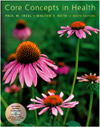Table 10-2 (See p. 270 in your text.) The Effects of Binge Drinking on College Students The http://www.hsph.harvard.edu/cas
Harvard School of Public Health College Alcohol Study examines health risk behaviors
among college students, including binge drinking, tobacco use, and illicit drug
use. It includes information on the effects of binge drinking on both bingeing
and nonbingeing students. For information on alcohol use by other groups of Americans, consult the following
sites: The http://www.DrugAbuseStatistics.samhsa.gov
Substance Abuse and Mental Health Services Administration (SAMHSA) publishes
the annual National Household Survey on Drug Abuse (NHSDA), which includes statistics
on alcohol use, heavy drinking, and binge drinking among different groups of
Americans. http://monitoringthefuture.org
Monitoring the Future focuses on drug use among high school students (8th, 10th,
and 12th graders). http://www.cdc.gov/nccdphp/brfss
CDC Behavioral Risk Factor Surveillance System looks at health risk behaviors
among adults, including the use of alcohol and tobacco. http://www.cdc.gov/nccdphp/dash/yrbs/index.htm
CDC Youth Risk Behavior Surveillance System looks at a variety of health risk
behaviors among young people, including the use of tobacco, alcohol and other
drugs. | 


 2002 McGraw-Hill Higher Education
2002 McGraw-Hill Higher Education